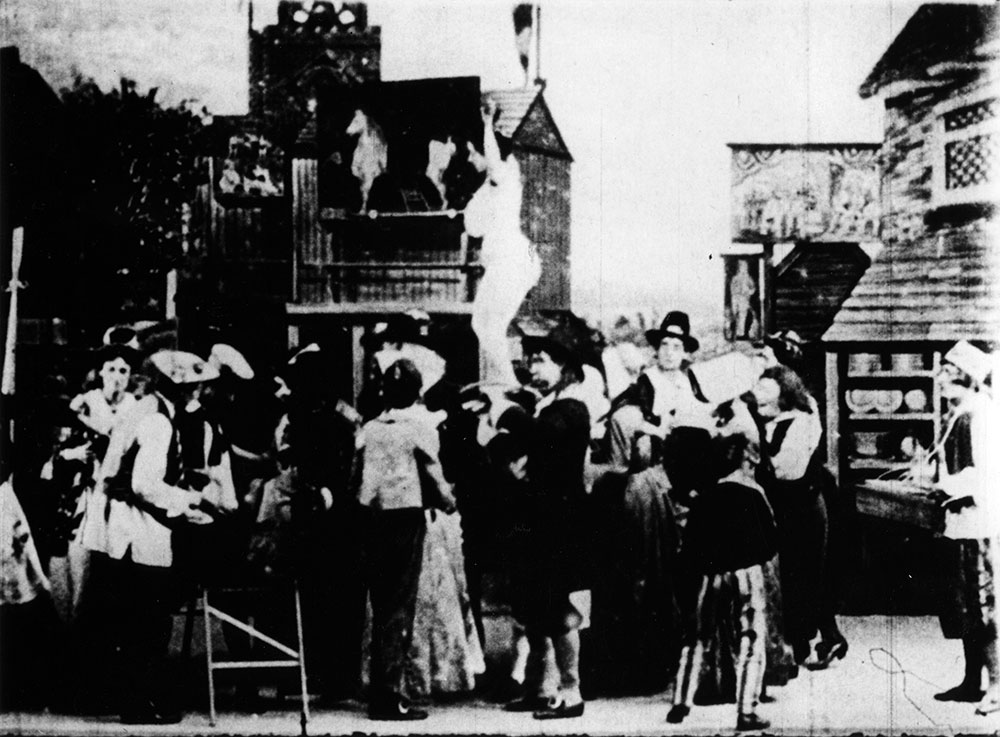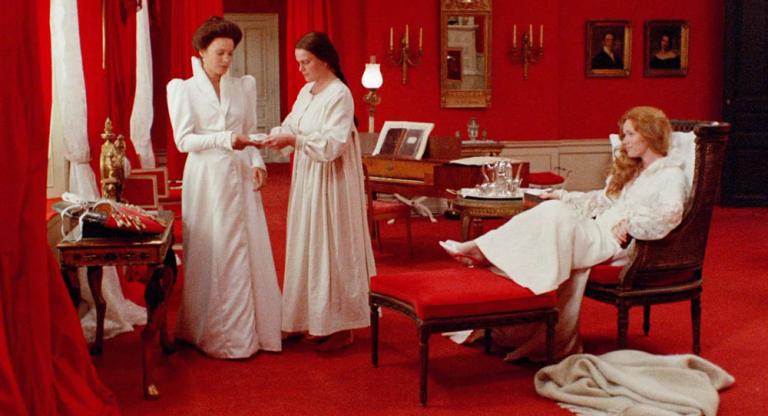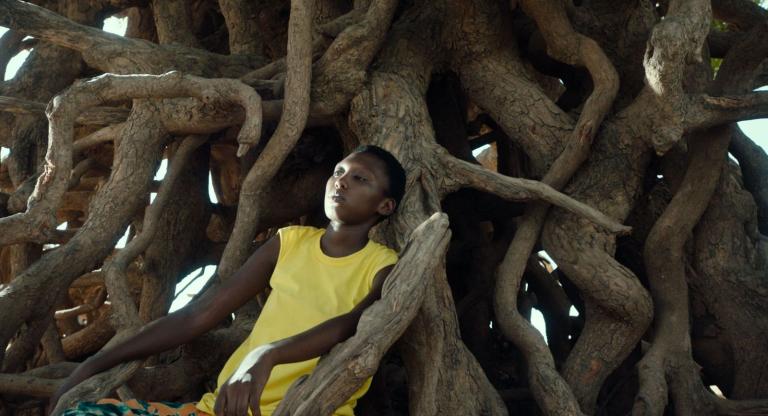“Shown in Eight Snappy Scenes,” heralded the full-age ad for the lavish one-reeler Tom, Tom, the Piper’s Son in the American Mutoscope & Biograph March 1905 bulletin. “Eight snappy scenes? Not when I got through with it,” quipped Ken Jacobs in a recent email to me, referring to his 1969 transformation of the original 10-minute movie into the nearly two-hour found-footage masterwork Tom, Tom, the Piper’s Son. Jacobs re-photographed the original using a panoply of modern techniques: zooming in, panning, slowing footage down, stopping it, playing it backwards, and much, much more. At times, this created grainy abstractions but at others it honed in on vivid details that could only register subliminally when projected at normal speed. Jacobs is the ultimate Frankenstein artist, using machines and electricity to reanimate old movies and create entirely new beasts. As he describes his fascination with Tom, Tom: “Ghosts! Cine–recordings of the vivacious doings of persons long dead!”
The 1905 Tom, Tom, which was filmed by Billy Bitzer (who became D. W. Griffith’s cinematographer), is one of the 3,000 movies made between 1896 and 1912 that exists today only because it was deposited at the Library of Congress as a paper print, meaning each frame of the negative was converted to a contact print. On February 29, 1968, the heroic archivist Kemp Niver, who spent more than two decades converting the paper prints to 16mm, presented “In the Beginning,” a selection of the restored films at the Museum of Modern Art. The New York Times’ new film critic Vincent Canby covered the event, calling it a “Tutankhamen tomb of film riches.” Ken Jacobs happened to read the article and was fascinated. When the distributor Audio-Brandon put some of these films into circulation, Jacobs rented a print of Tom, Tom for a film class he was teaching at St. John’s University. He was stunned by the sheer exuberance and vitality of the film.
Filmed on February 12, 1905, in Manhattan at Biograph’s Union Square studio, Tom, Tom, the Piper’s Son had sets and costumes inspired by William Hogarth’s 1733 etching Southwark Fair, a teeming depiction of a London carnival populated by theater troupes, vendors, musicians, jugglers, and boisterous revelers. The movie’s slight narrative thread is provided by the titular nursery rhyme: a mischievous boy steals a pig, runs away, and is chased by a mob of grown-ups. As the grown-ups pursue Tom, they run up and down ladders, jump through windows, and disappear into and emerge from a chimney stack—all of the adults find themselves repeating Tom’s evasive maneuvers. With its chain of repetitions, the 1905 Tom Tom stands as a proto-structuralist gem even without Jacobs’ intervention. Niver wrote that Tom, Tom “evinces production standards, direction, costumes, and sets of a creative nature [not seen] until the arrival of D.W. Griffith some three years later.” The film also fit into a popular genre at the time: the Bad Boy film. “The spectator knows that the bad boy will engage in a series of humorous, mischievous acts,” wrote the film historian Charles Musser. “Bad boy films were directed at adult, middle-class males who were expected to recall the carefree days of childhood. Yet when shown to children and working-class immigrants, they became potentially subversive.”
Jacobs studied the film on an analytic projector that allowed him to slow down, stop, and rewind the film. He was already used to looking at films closely this way; his very first film projector, bought in 1955, was a silent analytic projector. When he taught at Binghamton University starting in the 1970s, he used a similar technique in his lectures. The film critic and former Jacobs student J. Hoberman remembered, “As his projectionist, I had the nerve-racking job of showing films backward, forward and frame by frame as Ken improvised a pedagogical voice-over.”
This method of taking films apart was more than a teaching tool for Jacobs; it became the key to his artistic practice. He began to delve deeply into existing footage, releasing the energy latent in each microsecond of cinema, and reveling in the tension between the flatness of the screen and the seeming depth that the images immerse us in, between the way that movies unfold in the present tense while capturing moments that have long past.
In a brilliant gesture, Jacobs’ Tom Tom opens and closes with the 1905 film played in its entirety, a perfect framing device for his mind-expanding cinematic adventure. When we see the film for the second time, we are transformed; Jacobs has shown us how to look closely, how to see beyond what looks like a crude narrative to appreciate the treasures that can be discovered within each single frame. The film is analytical, but it is also highly sensuous. Annette Michelson captured this when she wrote Jacobs “first offers the film in extenso, then proceeds…to reshoot the film for one hour, with what one can only describe as a loving, indeed, an amorous caressing and exhibition of the film’s hitherto obscured, intimate parts.”
Jacobs is equally fascinated by the behavior of the real people who gathered in front of the camera in elaborate costumes to bring the film to life, as he is by the very physical nature of the medium that he—and Billy Bitzer—are working in. We are constantly reminded of the machinery used to record and project the film throughout Tom Tom. Jacobs made the film by setting up a camera and a projector in his Chambers Street loft, and working with an assistant to re-film his Tom Tom print—sometimes off a portable movie screen and sometimes off small sheets of paper that would enable him to zoom in on minute gestures. Jacobs worked with an illegally duplicated copy of the print he rented; thus, increasing the graininess of the original. His film always reminds us that the depth we feel–the sense that we are somehow going beneath the surface of the original–is purely an illusion. At one point, the images blur; it looks like the film strip has slipped out of registration. The image eventually settles and we realize Jacobs has tricked us, but with a purpose: to make sure we are always aware of the cinematic apparatus.
Jacobs’ Tom Tom is so profoundly about the photochemical film process and the celluloid film strip that it is both a disorienting and exhilarating experience to watch. The film has been part of Anthology’s “Essential Cinema” collection for 50 years, playing in rotation since the early 1970s. When the collection was launched, P. Adams Sitney wrote in a manifesto, “One of the guiding principles of this new film museum is that a great film must be seen many times. For that reason the collection will be presented in repeated cycles.” Could Sitney have imagined the way that the medium would change so decisively in the half-century since the “Essential Cinema” screenings began? It is precisely because the films in the collection are artifacts of the analog era that these screenings on celluloid, and in a theater, feel more essential than ever.
Always ready to embrace and play with new technology, Jacobs did not remain a celluloid purist. In fact, the computer has given him new tools to continue his examination and reinvention of old movies. In 2008, he revisited Tom Tom the Piper’s Son in thrilling fashion in the feature-length Return to the Scene of the Crime, playing with color and 3D effects in ways he couldn’t in 1969. Whatever tools he uses, Jacobs draws us into impossible worlds that can only exist in the medium in which they’re made–and in our minds–yet are at the same time always connected to the real world.
Tom, Tom, the Piper’s Son screens tonight, February 28, at Anthology Film Archives on 16mm, as part of the Essential Cinema series. The documentary “Ken Jacobs — From Orchard Street to the Museum of Modern Art” runs from March 1-3 at Anthology Film Archives. Director Fred Riedel will be in attendance for a Q&A with Ken Jacobs on March 2.



